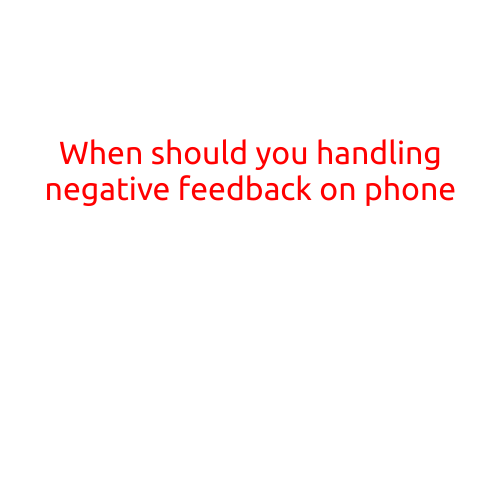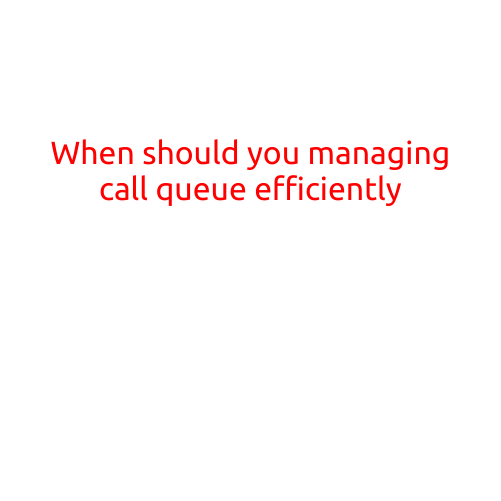
When Should You Handle Negative Feedback on Phone?
In today’s digital age, customer feedback is more important than ever. It’s a crucial part of understanding what customers like and dislike about your products or services, and can be a powerful tool for improving your business. However, when dealing with negative feedback, it’s essential to strike the right balance between addressing the issue and keeping your customers happy.
In this article, we’ll explore when you should handle negative feedback on phone, and how to do it effectively.
When to Handle Negative Feedback on Phone
There are several situations where it’s essential to handle negative feedback on phone:
- Time-sensitive issues: If a customer has an urgent issue that requires immediate attention, a phone call is often the best way to resolve it quickly.
- High-emotional issues: Customers who are upset or frustrated may prefer to speak with someone in person, especially if they’re dealing with a critical problem.
- Collecting detailed information: Sometimes, phone calls are the best way to collect detailed information about an issue, especially if it’s complex or requires precise details.
- Emotional or sensitive topics: Phone calls can be more effective for discussing sensitive or emotional issues, as customers may feel more comfortable sharing their concerns with a human.
When to Avoid Handling Negative Feedback on Phone
While phone calls can be effective for addressing negative feedback, there are also situations where you may want to avoid them:
- Low-priority issues: If a customer has a minor issue that can be resolved through email or ticketing systems, it may not require a phone call.
- Routine or standard issues: If a customer has a standard, routine issue that’s covered in your FAQ or product documentation, a phone call may not be necessary.
- Multistep processes: If a customer needs to go through a multistep process to resolve an issue, phone calls may not be the most efficient way to handle it.
How to Handle Negative Feedback on Phone
When handling negative feedback on phone, follow these best practices:
- Listen actively: Pay attention to the customer’s concerns and acknowledge their issues. Show empathy and understanding.
- Take detailed notes: Record as much information as possible, including the customer’s contact information, issue description, and any previous interactions.
- Provide solutions or alternatives: Offer specific solutions or alternatives to resolve the issue, or escalate it to a supervisor if necessary.
- Follow up: Confirm that the issue is resolved and ask the customer if they have any further concerns.
- Keep calm and patient: Stay calm and patient, even in difficult or emotional situations.
Conclusion
Handling negative feedback on phone requires a delicate balance between addressing the issue and keeping the customer happy. By understanding when to handle negative feedback on phone, and how to do it effectively, you can turn unhappy customers into loyal advocates for your business. Remember to prioritize time-sensitive, high-emotional, or sensitive issues, and use phone calls to collect detailed information and provide personalized solutions.





